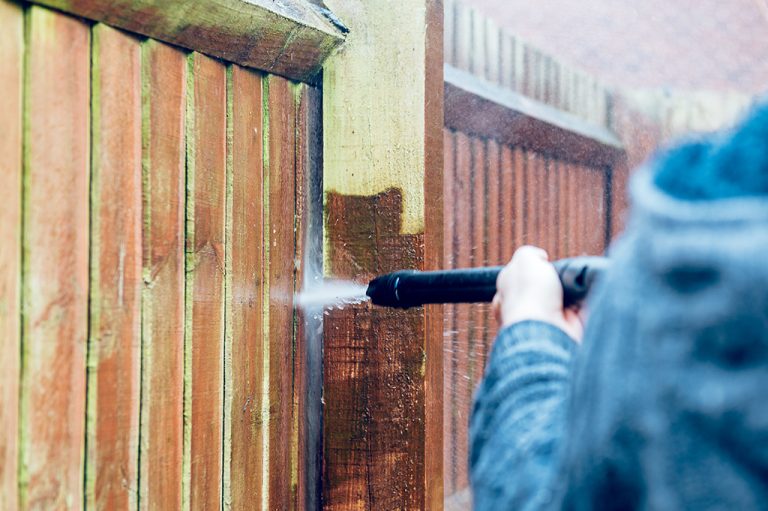
The Ultimate Guide to Power Washing Your Home and Driveway
Power washing uses high-pressure water to clean your home’s exterior and driveway. This method is excellent for removing dirt, mold, and tough stains, enhancing curb appeal and maintaining the integrity of surfaces. In this guide, you’ll learn the benefits, how often to power wash, essential equipment, techniques for different surfaces, and crucial safety tips.
Key Takeaways
- Power washing enhances curb appeal and prevents surface deterioration, leading to increased property value and longevity.
- Frequency of power washing varies by surface type and environmental conditions; vinyl siding needs cleaning every 1-2 years, while wood should be washed biannually.
- Utilizing the correct pressure washer and attachments is essential for effective cleaning, with adjustments needed based on surface material to avoid damage.
The Benefits of Power Washing
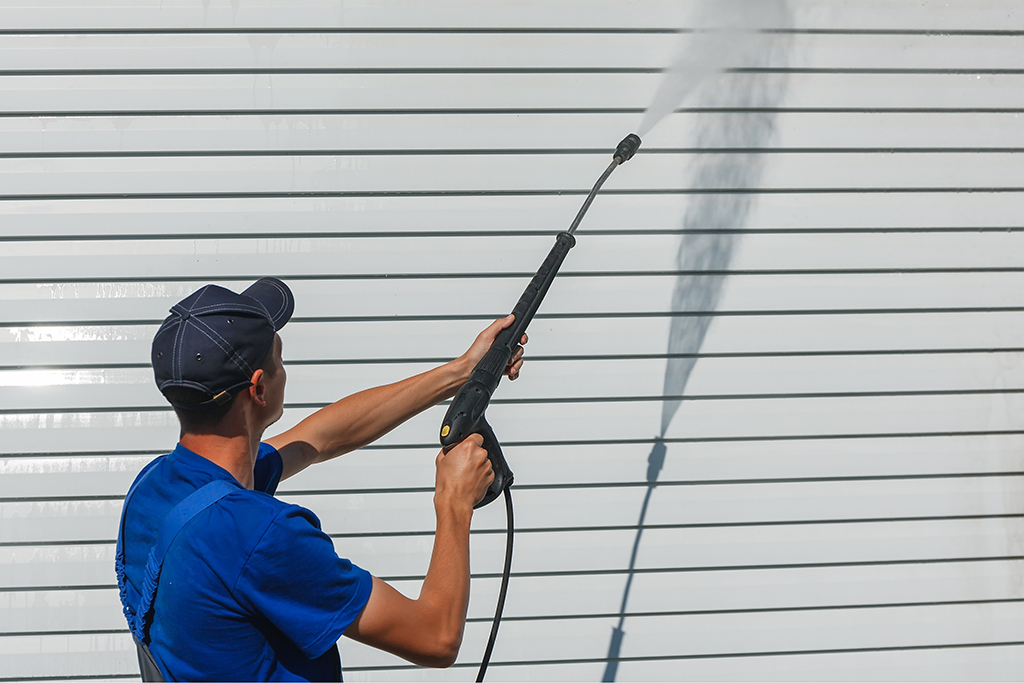
Power washing provides numerous benefits beyond mere cleanliness, such as dramatically improving curb appeal. A clean exterior can make your property stand out in a competitive real estate market, attracting potential buyers and increasing its perceived value by as much as 5%. The visual transformation achieved by removing layers of dirt and grime can be astounding, instantly making your home look well-maintained and inviting.
Beyond aesthetics, regular power washing plays a crucial role in maintaining the integrity of various surfaces around your home. For instance, it helps prevent the deterioration of siding, extending its lifespan and saving on future repair costs. Power washing effectively removes harmful dirt, mold, and mildew, which can cause long-term damage if left untreated. Regular cleaning as part of your home maintenance routine helps you avoid costly repairs and extends the longevity of your property.
It is also highly effective in tackling tough stains and restoring the appearance of multiple surfaces. Whether it’s oil stains on your driveway, mold on your siding, or rust on your concrete, a pressure washer combined with the right cleaning solution can make a significant difference. The high-pressure water stream can reach deep into crevices and remove stubborn dirt that traditional scrubbing might miss, ensuring a thorough clean every time.
How Often Should You Power Wash?
Before: How often you need to power wash depends on the surface type and environmental conditions. For example, vinyl and aluminum siding typically require cleaning every 1 to 2 years, depending on the level of dirt and grime buildup. Wood siding, on the other hand, should be power washed biannually to prevent mold and mildew growth, which can cause significant damage over time. Concrete driveways and walkways generally need cleaning every 2 years to maintain their appearance and address any stains.
After: How often you need to power wash depends on the surface type and environmental conditions. Here are some general guidelines:
- Vinyl and aluminum siding: clean every 1 to 2 years, depending on the level of dirt and grime buildup.
- Wood siding: power wash biannually to prevent mold and mildew growth, which can cause significant damage over time.
- Concrete driveways and walkways: clean every 2 years to maintain their appearance and address any stains.
Climate also plays a crucial role in determining how often you should power wash. Homes in humid climates may require more frequent washing due to the increased likelihood of mold and algae growth.
Regular power washing is crucial for maintaining the appearance and integrity of various surfaces around your home, no matter where you live. By sticking to a consistent cleaning schedule, you can ensure that your property remains in excellent condition and free of harmful buildup.
Essential Equipment for Power Washing
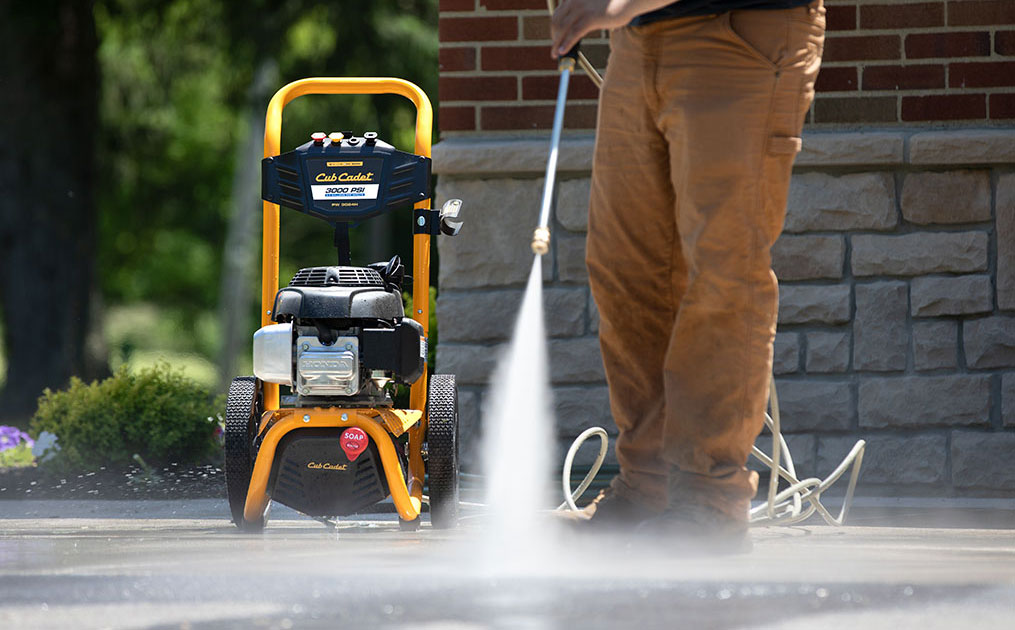
Using the right equipment is key to achieving the best results with power washing. A quality pressure washer is crucial for most cleaning tasks, offering adjustable pressure settings and multiple nozzles for versatility. Different spray nozzles provide varying spray patterns and pressure levels, allowing you to customize the cleaning process based on the surface and the type of dirt or stain you are dealing with. A high-pressure hose is also essential for delivering a powerful water stream that can tackle stubborn dirt in challenging locations.
Using specialized attachments can significantly enhance the efficiency and effectiveness of your power washing tasks. A surface cleaner, for instance, is designed to cover larger areas uniformly, making it ideal for cleaning driveways and other flat surfaces.
Extension wands are another valuable tool, allowing you to reach elevated or hard-to-access areas without straining. Selecting a cleaning agent tailored to the specific material being washed can also prevent damage and ensure a thorough clean.
Choosing the Right Pressure Washer
Selecting an appropriate pressure washer is vital for effectively tackling various cleaning tasks around your home and driveway. The key factors to consider are PSI (pounds per square inch) and GPM (gallons per minute). PSI measures the pressure at which the water is expelled from the washer, while GPM indicates the volume of water flow. For delicate surfaces, a lower PSI is recommended to prevent damage, whereas tougher stains on concrete surfaces may require a higher PSI.
Effective cleaning without causing harm requires adjusting the pressure and nozzle based on the surface type. For example, vinyl siding requires a medium pressure of 1300 to 1600 PSI, while wood siding should be cleaned with a lower pressure setting to avoid splintering.
Selecting the right pressure washer ensures you can handle various cleaning tasks efficiently and safely.
Must-Have Attachments
The right attachments can significantly enhance your power washing experience. Surface cleaners are particularly effective for large, flat surfaces like driveways and patios, allowing for quicker and more even cleaning compared to standard nozzles. These attachments cover more ground in less time, ensuring a uniform clean without streaks or missed spots.
Investing in high-quality attachments not only accelerates the cleaning process but also helps prevent damage to surfaces and ensures thorough results. Extension wands, for example, enable you to clean hard-to-reach areas without the need for a ladder, enhancing safety and convenience.
By equipping yourself with the right tools, you can maximize the efficiency and effectiveness of your power washing tasks.
Preparing for Power Washing
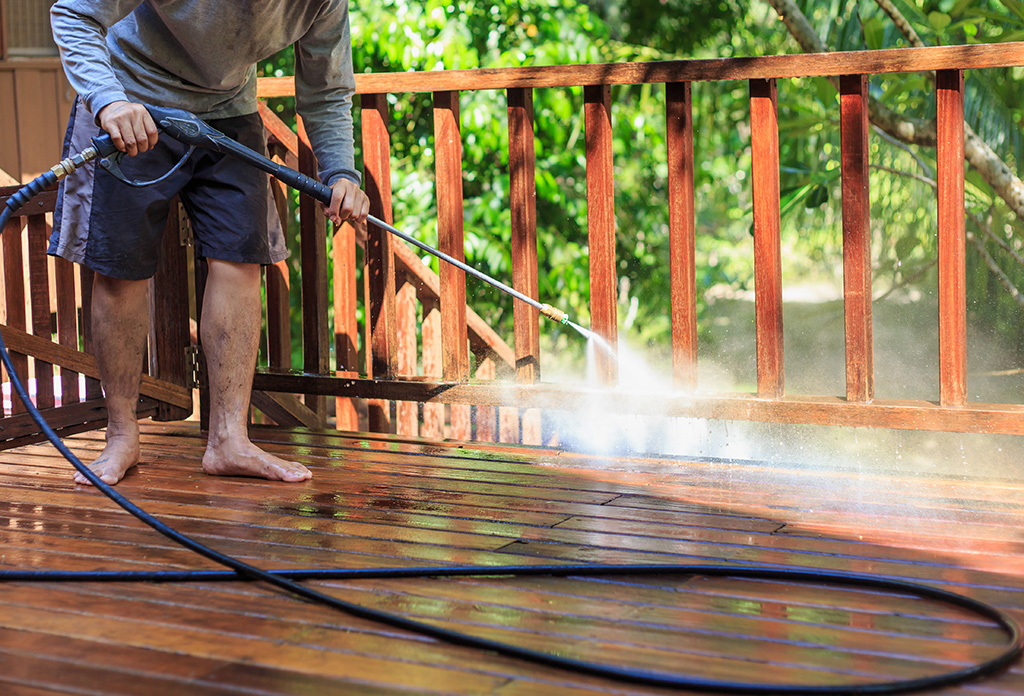
Proper preparation is key to ensuring a smooth and effective cleaning process before you start power washing. Begin by removing furniture, potted plants, and any other obstacles from the area to avoid hindering your work and to protect these items from potential damage. Clearing the workspace of debris with a stiff-bristled broom can also help prevent clogs in your pressure washer and ensure a more thorough clean.
Prioritizing safety is paramount when preparing for power washing. Make sure to cover electrical outlets and cords to prevent water from causing electrical hazards. It’s also important to choose a suitable cleaning solution for the surface you’re working on. For instance, using a bleach-based solution can help break down tough grime and mildew stains, making the pressure washing process more effective.
Thorough preparation not only enhances the efficiency of power washing but also helps identify any issues, such as cracks in siding or damaged areas, that need to be addressed beforehand. By taking the time to prepare properly, you can ensure a safer, more effective cleaning experience that leaves your home looking its best.
Also Read: Top Tips for Effective House Washing: Safeguarding Your Home’s Exterior
Techniques for Power Washing Different Surfaces
Specific techniques are required for different surfaces to avoid damage and achieve the best results during power washing. Wet concrete surfaces, for example, can withstand higher pressure settings and often require a 15-degree nozzle for effective dirt and stain removal.
Conversely, wood siding needs a gentler approach to prevent splintering and damage, typically using a wider nozzle and lower pressure.
Cleaning Vinyl Siding
When cleaning vinyl siding, it’s crucial to spray downward to prevent water from seeping behind the siding, which can cause damage over time. Using a 25-degree nozzle provides a safe and effective balance for clean vinyl siding, typically with a medium pressure of 1300 to 1600 PSI.
A bleach and water mixture can be applied before pressure washing to enhance mold and mildew removal.
Washing Concrete Driveways
Proper techniques and equipment are necessary to effectively clean a concrete driveway. A 15-degree nozzle is recommended to concentrate the pressure on tough stains, while a fan tip nozzle can cover larger areas. Using a degreaser can help effectively remove oil stains from concrete driveways, ensuring a thorough clean.
Power Washing Wood Siding
For wood siding, maintaining the right pressure settings is crucial to prevent damage. A pressure of 500 to 600 PSI is advisable to avoid splintering wood fibers.
Cleaning along the grain of the wood and using a wider nozzle, such as a 25-degree option, helps distribute pressure evenly and ensures the longevity and appearance of wood siding.
Removing Stubborn Stains with Power Washing
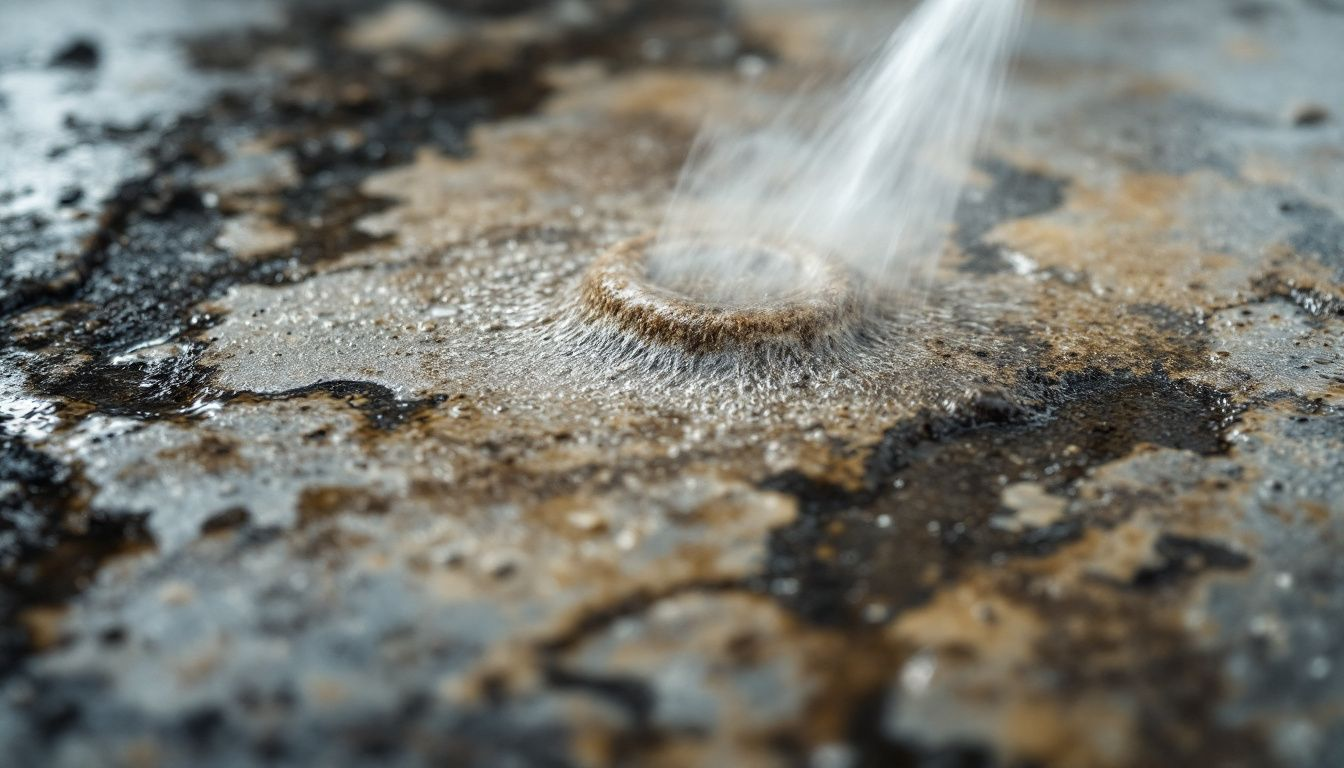
It effectively removes stubborn stains like mold, mildew, oil, and rust from various surfaces. Utilizing appropriate pressure settings and techniques specific to the type of stain and surface material is essential for achieving the best results.
Oil Stains on Driveways
Effectively removing oil stains from driveways involves applying a liquid grease remover and letting it sit before pressure washing with a rotating nozzle. Using a commercial-grade cleaner followed by pressure washing can significantly improve the appearance of fresh oil stains on concrete surfaces.
Mold and Mildew on Siding
Mold and mildew thrive on damp, shaded surfaces and can cause significant damage if not addressed. For effective cleaning, mix a solution of one part bleach to three parts water and apply it to the surface before pressure washing with a power washer set to at least 1500 PSI.
Ensure surrounding plants and furnishings are protected from the cleaning solution during the process.
Rust Stains on Concrete
Rust stains on concrete can be tackled with a solution of muriatic acid, which helps to dissolve the rust and restore the surface. Always apply muriatic acid with caution due to its corrosive nature, and follow up with a thorough rinse to remove any residue.
Also Read: Transform Your Home with Expert Power Washing Tips
Safety Tips for Power Washing
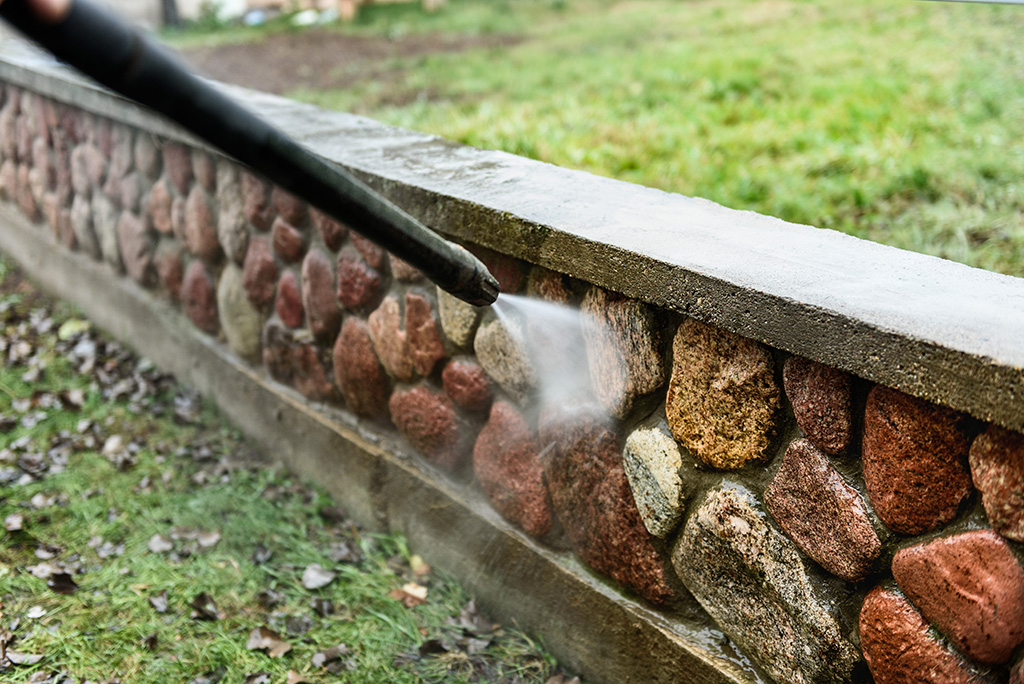
Prioritizing safety is crucial when power washing. Wearing protective gear like gloves, masks, and safety goggles safeguards against water spray and debris. Maintaining a safe distance from the surface being cleaned and using a lower pressure setting for delicate areas can prevent damage.
Using a pressure washer while on a ladder is risky, as the recoil can cause you to lose balance. Additionally, cover electrical outlets and cords to prevent water from causing electrical hazards during the cleaning process.
Following these safety tips ensures a safe and effective power washing experience.
Hiring Professional Power Washing Services
If you lack the time, equipment, or expertise, hiring professional power washing services can be a wise investment. Residential power washing services typically charge between $183 and $380, with driveway cleaning costs ranging from $130 to $220. Pricing can vary based on square footage, hourly rates, or flat rates, depending on the project’s nature.
Professionals have the experience and specialized equipment to handle various surfaces and stains, ensuring a thorough and safe cleaning process. Consider hiring professionals for larger or more complex jobs to achieve the best results.
Summary
Power washing is an essential maintenance task that offers numerous benefits, from enhancing curb appeal to preventing surface deterioration. Regular cleaning with the right equipment and techniques can significantly improve the appearance and longevity of your home and driveway. By following the guidelines in this guide, you can ensure effective and safe power washing, whether you choose to do it yourself or hire professionals.
Maintaining a clean exterior not only makes your home more attractive but also helps protect your investment. Embrace the power of pressure washing to keep your property looking its best and enjoy the satisfaction of a job well done.
Frequently Asked Questions
How often should I power wash my vinyl siding?
You should power wash your vinyl siding every 1 to 2 years, depending on dirt and grime accumulation. Regular cleaning helps maintain its appearance and longevity.
What is the recommended PSI for cleaning wood siding?
The recommended PSI for cleaning wood siding is between 500 to 600 PSI to avoid splintering and damage. Stick to this pressure range for effective and safe cleaning.
Can I use a pressure washer to remove oil stains from my driveway?
Yes, using a pressure washer with a degreaser is an effective method to remove oil stains from your driveway. This combination enhances cleaning power and ensures better results.
Is it safe to power wash mold and mildew from siding?
Yes, it is safe to power wash mold and mildew from siding if you use a proper cleaning solution of one part bleach to three parts water and set the nozzle to a wider spray to avoid damaging the surface.
Should I hire a professional for power washing?
Hiring a professional for power washing is advisable if you lack the time, equipment, or expertise, as it can ultimately be a worthwhile investment. Their services usually range from $183 to $380 for residential projects.

